Audioquest Storm Series
Discussing power cords is like walking on thin ice. However, in hi-fi community what is not? Still this topic is even more subjective than any other – for example just swapping a cable for a longer or shorter one, otherwise completely identical, will probably alter what we are hearing. When AudioQuest completed their brand new “Storm” range of power cords we decided to organize a comparative review to see what kind of logic AudioQuest used for establishing their hierarchy. It was an interesting journey.
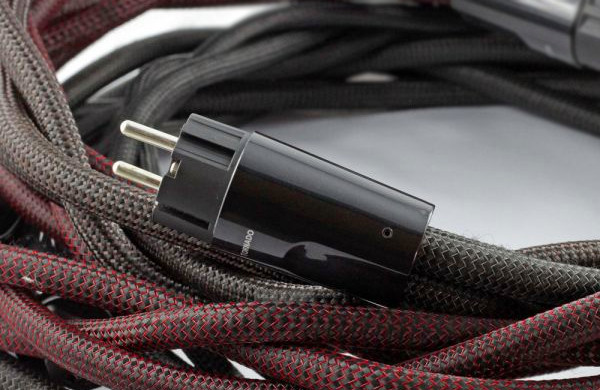
Three Storms of AudioQuest
All the Storms were auditioned in identical conditions with an identical line-up. The acoustically well treated and spacious room hosted Arcam SACD CDS50 player (connected via AudioQuest Hurricane into AudioQuest Niagara 5000), Arcam C48 preamplifier (connected via AudioQuest NRG 1000 into AudioQuest Niagara 5000) and Arcam P48 power amplifier (connected by a stock power cable into wall, no filtering). Interconnects were AudioQuest Mackenzie and Water, and speaker cables were AudioQuest Redwood. The line-up was completed by Acoustique Quality AQ Passion loudspeakers.
The power amplifier was the victim of the shoot-out. All the Storm power cords replaced the stock cord one by one, repeatedly with miscellaneous music program. To eliminate any ‘family’ help the Arcam P48 was not connected to AudioQuest Niagara 5000 but to quite a shabby wall outlet that shared the mains with a whole floor of offices. As bad as it may sound it approximates what we experience in our daily lives – few audiophiles have the comfort of a dedicated power line.
To keep everything simple and focused I used just two recordings. For the critical listening Anton Bruckner’s Scherzo from Symphony No.9 was chosen (Stanislaw Skrowaczewski, Minnesota Orchestra, Reference Recordings RR-906CD). The liner notes say „The massive, almost supernatural Scherzo explodes with thunderous fury. A Wagner-tainted dissonance, blending two chords that generate gritty intervals, sets the mood for the relentlessly driving Scherzo.“ There are many elements to listen for – soft pizzicato, spacious ambience, reverbs, brittle winds, smooth strings, strokes of timpani, huge dynamic swings – everything from the renowned Reference Recordings’ kitchen.
The stock power cord
The line-up that I used represented hi-fi rather than high-end. However, after some years Arcam came back fully resurrected with no-nonsense components and excellent sound. No wonder that even with the stock cord the amplifier sounded terrific. Yet - after thorough auditioning - the typical imprint of OEM power lead became apparent. The winds were blazing and clear, the sound had focus and detail…still I wiggled in my listening chair. The sound lacked microdynamics though the contrast between silence and notes was huge. I seemingly heard lots of details but the textures were grainy like a sandpaper. The orchestral canvas did not have the relaxed quality that I was used to hear from concert halls, there was a kind of smog and restlessness that masked soft sounds and reverberation. It took a minute to swap the stock cord with the AudioQuest Thunder that settled between the wall receptacle and the IEC input of the Arcam.
The Thunder
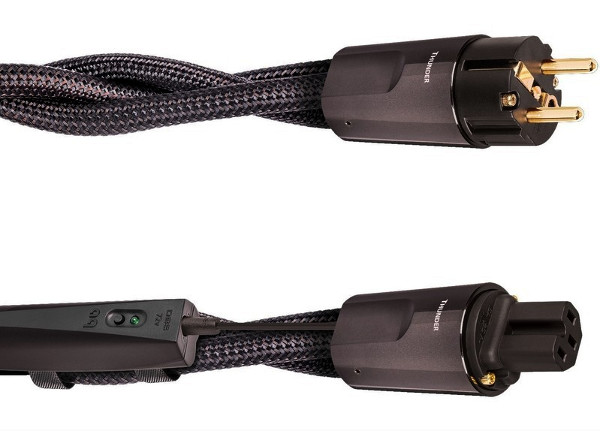
Orchestral ‘noise’ was the first thing I noticed. I mean those low-level sounds like rustling, scratching and crackling that are heard from the depth of an orchestra became much better delineated and identifiable. All of sudden the monotone background noise revealed its own texture. The strings acquired more colours too – no more just massed string section it was about individual instruments. The depth of image improved too. Not that the soundstage was wider or deeper – it was not. However, the depth acquired very fine gradation and it was much easier to navigate front to back.
The improvement from the stock cord to the Thunder was not a life-changing experience, no goose bumps, jaws dropping… you know what I mean. However, myriad of small nuances that actually elevated the listening experience became quite obvious when the stock cord was placed back into the system. No matter how hard you try to justify why not to invest into something like AudioQuest Thunder, at the moment it is out of the system you will missed it desperately. The sound of the stock cord was suddenly uninspiring, rough and sketchy.
The new AudioQuest Storm series builds on the know-how that Garth Powell developed during his work on the celebrated Niagara power conditioners. As simple as the task of developing “power line conditioning products” appeared in the beginning it became a trudge in the end. Especially with European versions the problems with mains evolve from completely different things and AudioQuest actually had to rebuild the components from scratch. With power cords it was easier because they utilize the technologies that are trickled down from the forerunning Niagara and the NRG line of power cables. In the Storm series – except for the much larger cross-sections of leads – the focus was on patented techniques that should bring down the resistance and suppress impedance. On top of that the Storm cables employ other features, like:
NDS (Noise Dissipation System) that represents an inductor configured to be connected in series between the ground node of the AC circuit and the load to attenuate radio frequency components present at the ground node.
DBS (Dielectric Bias System) that creates a strong and stable electrostatic field which polarizes the molecules of the insulation/dielectric. The insulation that is saturated by the energy from the DBS should lose the capacity of absorbing any additional energy from the propagating audio signal. This prevents parts of the signal’s energy to be stored and released back afterwards, thus reduces the smear of the signal in time. The DBS system is battery powered – a small push button with LED indicates it is working.
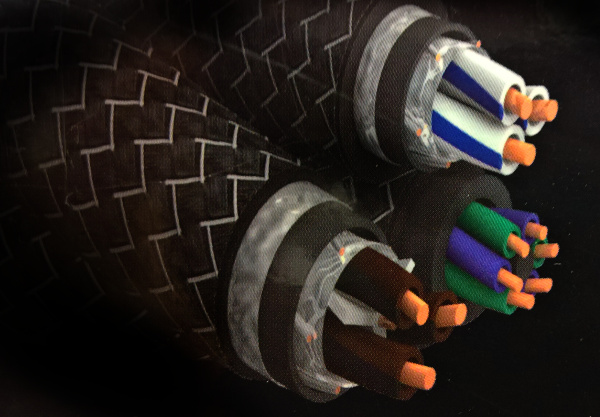
The Thunder, Tornado and Hurricane all share 2.3mm solid core leads that are made from high purity OFC copper. AudioQuest says that solid core has much lower distortion that is introduced by individual wires interactions in stranded leads. The copper has oriented and homogenous long grains structure and though in essence all the three reviewed Storm use the same material and the same cross-sections. The only difference is in a qualitative standard as AudioQuest employs high grade copper (LGC), perfect surface copper (PSC) that has its surface polished, and PSC+ copper that has tighter production tolerances and claimed better conductivity for high frequencies.
So, when comparing the Thunder, Tornado and Hurricane we were actually comparing the combination of LGC/PSC (the Thunder), PSC/PSC+ (the Tornado) and pure PSC+ (the Hurricane).
The Tornado
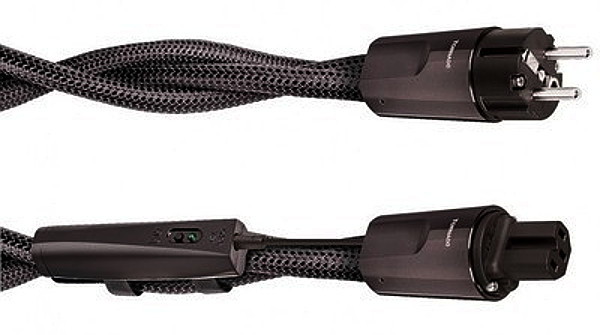
Moving up from the Thunder to the AudioQuest Tornado is slightly less striking. The overall tonality, colours, soundstage depth and smog-free presentation remain at the same level as it was with the Thunder. Even so the Tornado’s sound wass a bit different, as if I was able to hear better into the music. It is like visiting the very same performance two nights in row and taking a different seat at either occasion. With the AudioQuest Tornado the seat was better and I could enjoy the performance more, though I had difficulties to take a grip on what actually had changed.
The price difference between the Thunder and the Tornado is not negligible and if I should decide I’d rather buy more Thunders than fewer Tornados.
The Hurricane
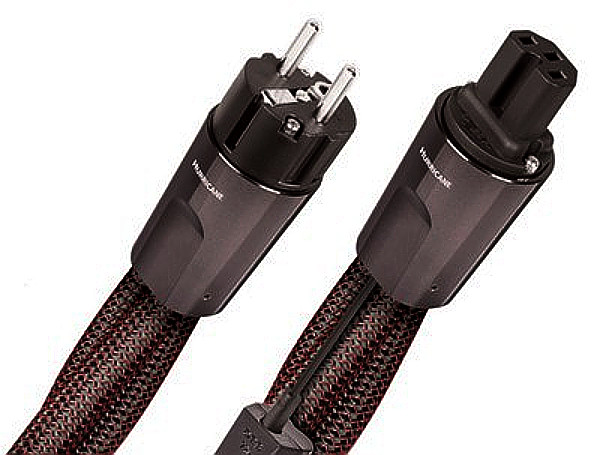
As small as the sonic difference was in the previous instance replacing the Tornado with the Hurricane was a quantum leap forward. The previous variations were rather felt than heard – the AudioQuest Hurricane granted completely different experience. The Hurricane was a champion in contrasts, the sound was captured with huge dynamics against completely silent backdrop. The black was blacker, silence was even more silent, drama more dramatic and decays became endless. The depth of image was focused as if the speakers got new lens. There were moments when I started to phonder whether it was not too much what I was hearing, whether it was not too hyperrealistic. Was the Hurricane just about ‘EQ-ing’ the frequency curve or were there another paranormal phenomena participating? The truth is that when I switched back to either the Thunder or the Tornado I missed the clean dynamics and the transparent view of the music.
To make sure I am not ear-blind I listened to Reunion Blues (Opus 3 Test CD) with all the cables. I heard the same things, the step forward between the stock cord and the Thunder, a shuffle between the Thunder and the Tornado, and a leap with the Hurricane. On Reunion Blues the Hurricane was slightly tilted up at top end, yet without any grain or shrill.
I can acknowledge that the new AudioQuest’s Storm power cables were not conceived to have an excuse for pricing up. Even with the Thunder there was audible improvement over the NRG line and the improvements were consistent when I moved up the Storm’s hierarchy. What amazes me the most is that these sonic improvements were achieved by clever use of processing the identical ‘master’, that is oxygen free copper.
I could not audition the complete Storm series – quite recently it has been completed with new models, AudioQuest Firebird (silver and copper, 1:2) and ridiculously expensive AudioQuest Dragon (silver and copper, 2:1). Well, let’s see if I can get a hold of them.
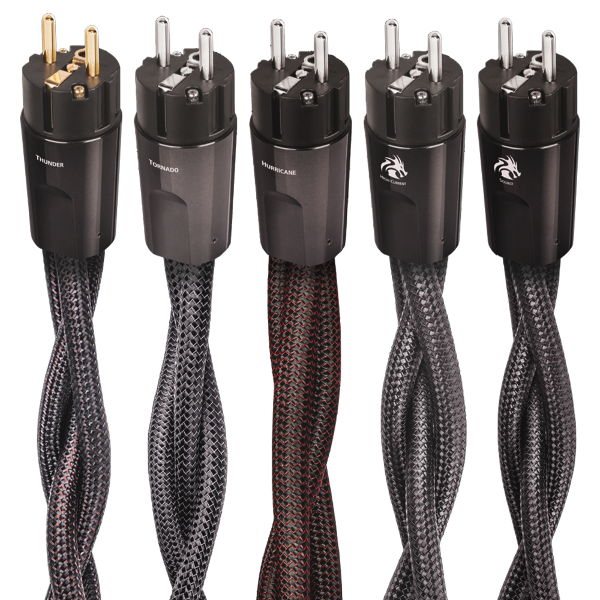
AudioQuest Thunder (800€/1.0m)
AudioQuest Tornado (1.100€/1.0m)
AudioQuest Hurricane (1.700€/1.0m)
AudioQuest Firebird (3.500€/1.0m)
AudioQuest Dragon (5.500€/1.0m)
Note: The prices shown are for HC (High Current) versions that are optimized for amplifiers. For all (except the Thunder) AudioQuest offers approximately 15% cheaper versions for source components that have slightly less AWG and, likely, different sound.
Kontakt: AQ s.r.o., Červenka, tel. +420 585 342 232, www.aq.cz



